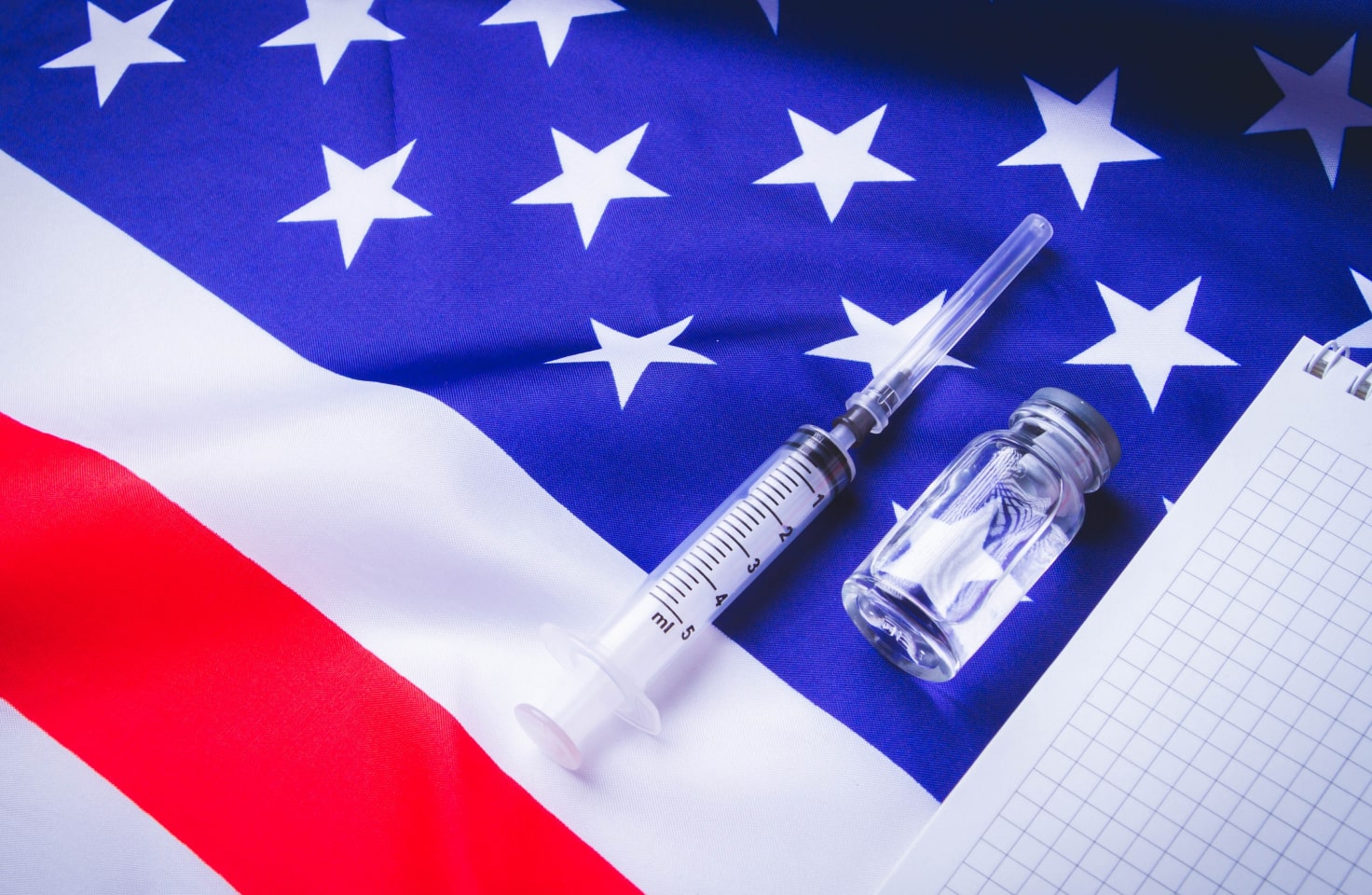T1D Guide
T1D Strong News
Personal Stories
Resources
T1D Misdiagnosis
T1D Early Detection
Research/Clinical Trials
9 Common Myths with Adult Onset Type 1 Diabetes
Type 1 diabetes is widely and wildly misunderstood. Read on as T1D Strong debunks the myths and explores common symptoms, causes and risks of T1D. Formerly known as juvenile diabetes, it's also called insulin-dependent diabetes, autoimmune diabetes, diabetes mellitus, and the 'worst kind' of the two.

The internet is a hotbed of resources, some more credible than others. It can be hard to decipher trustworthy sources at first glance. Social media is even crazier, with thousands of comments from people all over the world. However, it’s much easier today to debunk the half-truths than it was in the past.
As a mother of a son with type 1 diabetes (T1D), I’ve encountered countless misperceptions about the disease through the years. I've heard that T1D stunts your growth and can be cured with a plant-based diet, both of which are not true.
Breaking the incorrect stigma is becoming a mantra for me and others—especially since type 1 diabetes is on the rise. The Diabetes Care Journal from the American Diabetes Association (ADA) cites that adult onset T1D is on the rise. "Recent epidemiological data have shown that more than half of all new cases of type 1 diabetes occur in adults."
In addition to type 1 diabetes, latent autoimmune diabetes in adults (LADA or type 1.5) is steadily increasing, as is type 2 diabetes. Studies from the Centers for Disease Control and Prevention show all diagnosed diabetes type cases have grown significantly among U.S. adults 18 years and older across all diabetes mellitus types.
With all the misconceptions floating around about T1D, it’s nice to get your facts straight. While the type 1 diabetes symptoms and causes may vary, we know that T1D is an autoimmune disease in which the immune system attacks and destroys the insulin-producing beta cells in the pancreas. Doctors and scientists believe the autoimmune disorder is triggered by environmental factors and a person’s genes.
9 Myths of Type 1 Diabetes
Whether you’ve just been diagnosed or had T1D for a while, here’s a list of some common myths about adult-onset diabetes you may want to review.
Myth #1: It’s your fault—you must be unhealthy or out of shape to get type 1 diabetes.
People inaccurately think unhealthy lifestyles bring on diabetes—eating too much sugar or not exercising enough. While this is sometimes true with type 2 diabetes, it’s mistakenly associated with type 1 and even some cases of type 2 diabetes. Genetics plays a huge role in both. LADA isn’t reversible with changes in diet and workout régimes.
Unlike type 2, it’s an autoimmune disease where the body’s beta cells stop functioning. And while it’s an unfortunate diagnosis, keeping blood glucose levels is manageable. You can still live a long, healthy, active life.
Myth #2: You can’t run a marathon with type 1 diabetes.
There are countless pro athletes with type 1 diabetes, from Major League Baseball players to NFL football players like Jay Cutler and Kendall Simmons, who were diagnosed with T1D as an adult. Not soon after diagnosis, Simmons played starting tackle for the Pittsburgh Steelers during the year they won the Super Bowl.
T1D Max Domi plays for the Montreal Canadiens in the NHL, and Kris Freeman, a U.S. Olympic athlete, competes in cross-country skiing and has won several triathlons. T1Ds have climbed Mount Everest, raced Indy 500 cars, and run numerous marathons.
Fun Fact: T1D Jerry Nairn has run over 100 marathons since his diagnosis in 1974, and he’s not retired yet!
Still, before beginning any strenuous exercise plan, proceed with your doctor’s consent. Exerting exercise can affect your blood sugar level, causing dangerous hypoglycemic episodes.

Myth #3: Only children get type 1 diabetes.
This long-time misperception is losing steam as more adults are diagnosed with T1D. The truth is people six months to eighty years old can get type 1 diabetes. What’s more, nearly 40% of adults who develop type 1 are initially misdiagnosed with type 2. A common theme with type 2 misdiagnosis is that T1D adults might not immediately need insulin. It’s always best to listen to your body and get a second opinion if you feel something isn’t right.
Myth #4: I can eat and drink whatever I want because I take insulin.
The opposite of ‘you can’t eat sugar with diabetes’ is that ‘I can eat and drink whatever I want.’ Whether it’s a Key Lime Meringue pie or a cream soda carbonated beverage containing 64.7 grams of carbohydrates, it’s hard for your body to manage excessive glucose entering your bloodstream.
Too much sugar isn’t good for anyone, especially with diabetes, and over time, the unwarranted carbs lead to weight and other health issues. And while it’s okay to partake in alcohol, moderation is key for everyone. Alcohol can contribute to extended lows up to 12 hours later. Talk to your healthcare provider, consult a nutritionist and live your best life.
Myth #5: Insulin pumps and continuous glucose monitors do everything for T1Ds.
Unfortunately, scientists’ version of an artificial pancreas still falls short of a cure. An insulin pump delivers fast-acting insulin continuously throughout the day, with patients still testing and delivering additional insulin boluses for food. It's still important to have a blood glucose meter (BGM) in addition to your continuous glucose monitoring device. The pump adjusts the amount of insulin entering the body based on the glucose level measured by the CMG. It lessens the insulin when the blood sugar drops and increases when the blood sugar levels increase.
The artificial pancreas is the term used when an individual wears the combination of an insulin pump with a continuous glucose monitor (CMG). While the technology is incredible and contributes to unbelievable A1cs and healthier lifestyles for most people living with the disease, there is still work to be done in managing the illness.

Myth #6: A keto low-carb diet is essential for type 1 individuals.
While the keto diet may work for some, it may not be the best choice for everyone. A ketogenic diet is a low carbohydrate, high fat, adequate protein food planning that has been shown to reduce the use of insulin in some cases significantly. However, some T1Ds have experienced adverse health effects, particularly those with chronic low blood sugar levels, eating disorders, or underweight individuals.
Eating a healthy balance of carbohydrates, proteins, and fats is still suggested by the International Diabetes Federation. It’s no surprise nutritionists still say the best carbohydrates to eat are vegetables, fruits, whole grains, and legumes while avoiding foods high in fat, sodium and sugar. If you have T1D, work with your health care provider to develop a treatment plan right for you. Through healthy meals and insulin therapy you can achieve near perfect glycemic control.
Myth #7: People with low blood sugar can always feel their glucose dropping.
Unfortunately, as most people with diabetes can feel the physical symptoms of low blood sugar (lightheaded, shaky, weak, fatigued), some cannot. This is why frequent testing of glucose levels or wearing a CMG becomes vitally important.
There is also a condition called hypoglycemic unawareness, where the individual’s blood sugar levels drop dangerously low, increasing their risk of unconsciousness or even death.
Myth #8: My diabetes must be getting worse since I have to increase my insulin.
The body’s needs change due to stress, growth, diet, exercise, hormones, routine, weight gain or loss. Adjusting insulin levels is a constant challenge and has nothing to do with your overall health. Also, at the time of diagnosis, the pancreas is still secreting some insulin that stops over time. Regular checking, doctor’s visits and a1c testing are common to good diabetes management.

Myth #9: There will never be a cure since insulin is too profitable for greedy corporate pharmaceutical companies.
The Centers for Disease Control and Prevention (CDC) forecast that diabetes will affect one in 10 adults in the United States by 2040, or over half a billion individuals. Also, researchers from Innerbody cite that roughly 415 million people live with diabetes and one in five people with diabetes aren't aware they have it.
There’s no question it’s a lucrative disease for big Pharma. And when there is more money in treating the disease than a cure, the remedy seems unlikely.
However, there are potential cures on the horizon that give T1Ds, and their families hope. The FDA recently approved a drug (Tzield) to delay type 1 diabetes onset and a pancreatic islet cell therapy (Lantidra, CellTrans Inc.) to treat T1D patients with extreme hypoglycemia. Read here for more type 1 research breakthroughs on the horizon.
Scientists and researchers tirelessly work considerable hours a day to find a cure. Many are doing it for their children or loved ones. These heroes won’t be denied.
Get Tested!
Even if you have no family history, but show one or two of these warning signs, a simple blood sugar test can rule out diabetes.
Type 1 Diabetes Symptoms:
- Extreme thirst and hunger.
- Frequent urination.
- Unexplained weight loss.
- Extreme weakness or fatigue.
- Blurred or distorted vision.
- Mood changes: Irritability and other mood change.
- Dry skin or wounds that take longer to heal.
Also, it's important to know that misdiagnosis between the different types is common. Type 1 and LADA diabetes are commonly misdiagnosed as type 2. The European Association for the Study of Diabetes (EASD) conducted a research council concluding general screening for autoantibodies should be in newly diagnosed LADA cases. The Consensus Statement was written by an international expert panel.
The One Truth about Type 1 Diabetes
There isn’t a type 1 cure for all yet, but the diabetes care, medical techniques and technological advances are increasing daily. Receiving a diabetes diagnosis is not what it used to be. T1Ds now live into their 80s and 90s by eating a balanced diet, getting enough physical activity and rest while checking their blood sugar levels regularly.
Managing T1D is a challenging 24 hours a day job with no holidays. One doctor told me balancing blood sugar is like keeping a balloon in the air—forever. It’s important to keep the faith, and as the old quote goes, ‘Every day may not be good, but find the good in every day.’ Some days you’ll be on top of your levels, and some days you won’t. Let it go, forgive yourself and carry on—a T1D cure is an ever-shifting paradigm.


.webp)





.webp)
.jpg)
.jpeg)
.jpg)
.jpg)
.jpg)
.jpg)



.jpg)

.jpg)

.jpg)



.jpg)
.jpg)
.jpg)

.jpg)

.jpg)














.jpg)


.jpg)







.webp)












.webp)





















.webp)







.jpg)




.jpg)
















.webp)